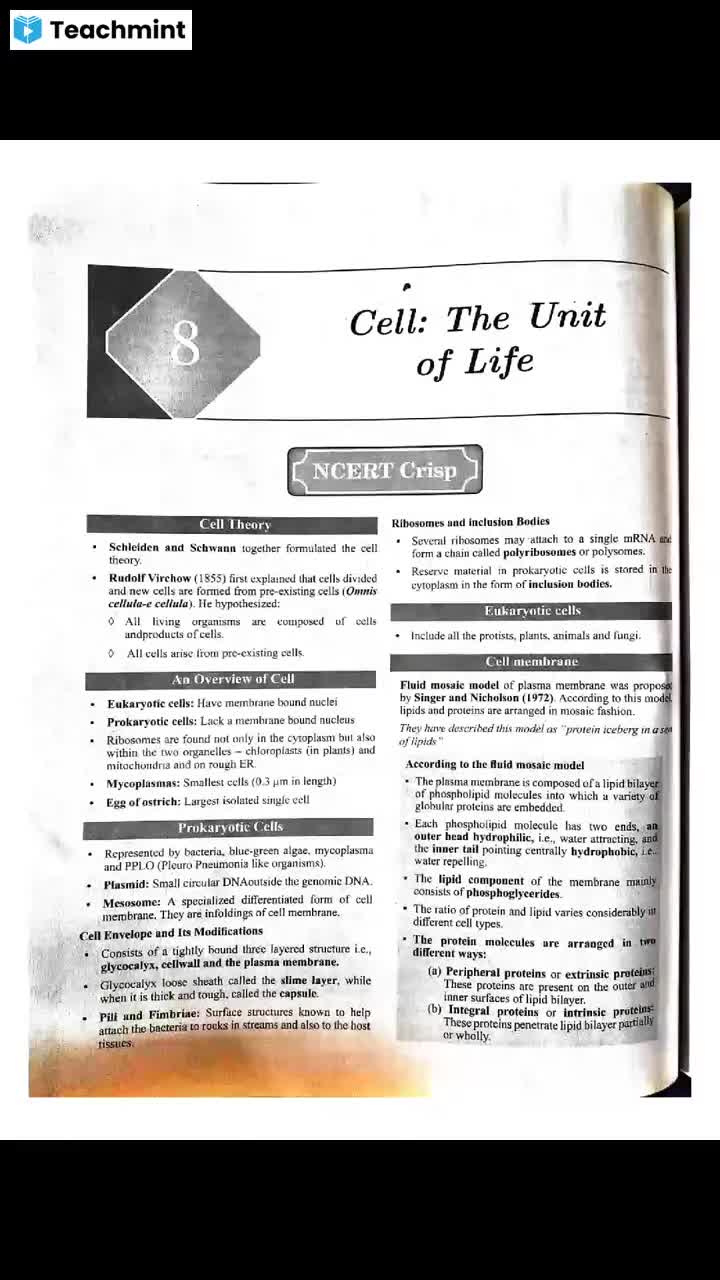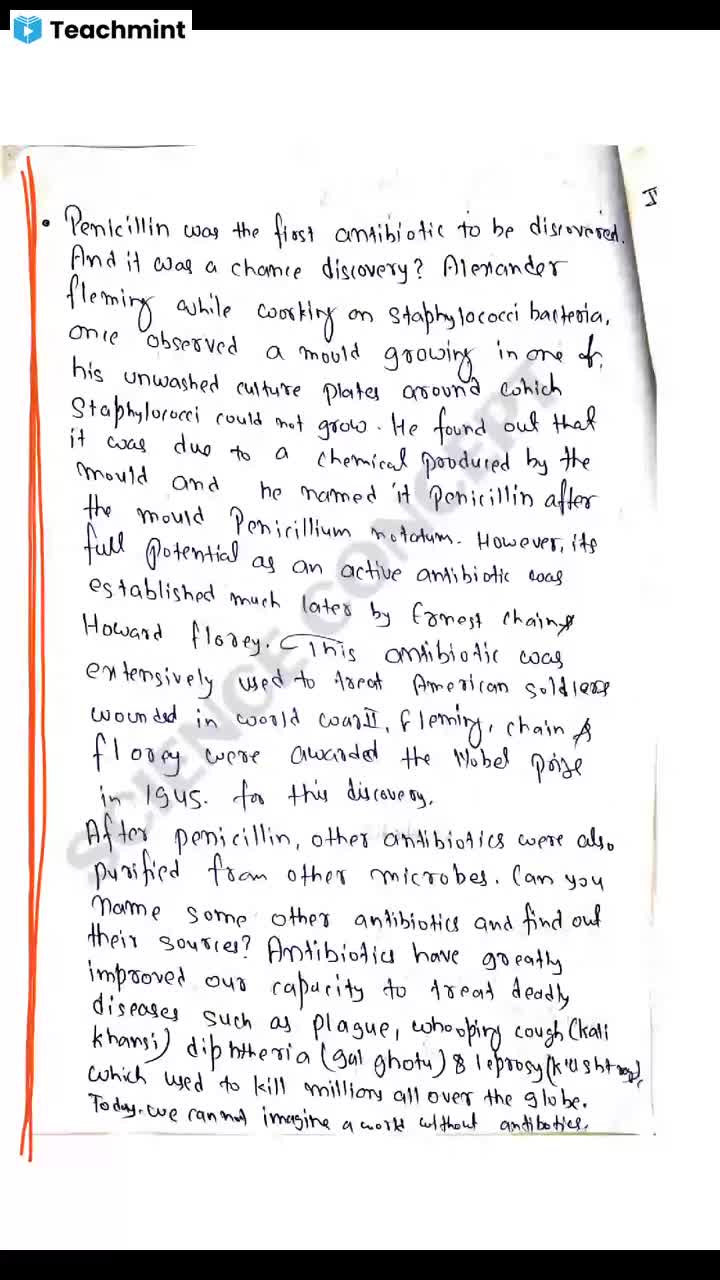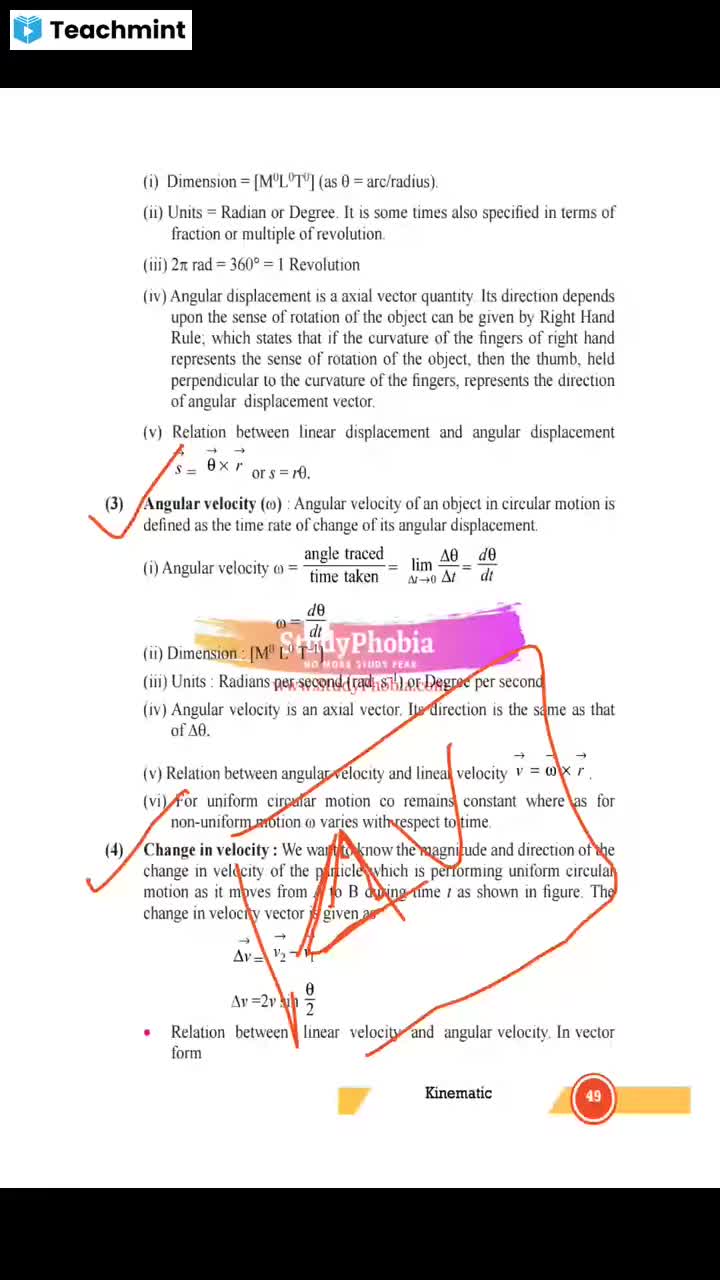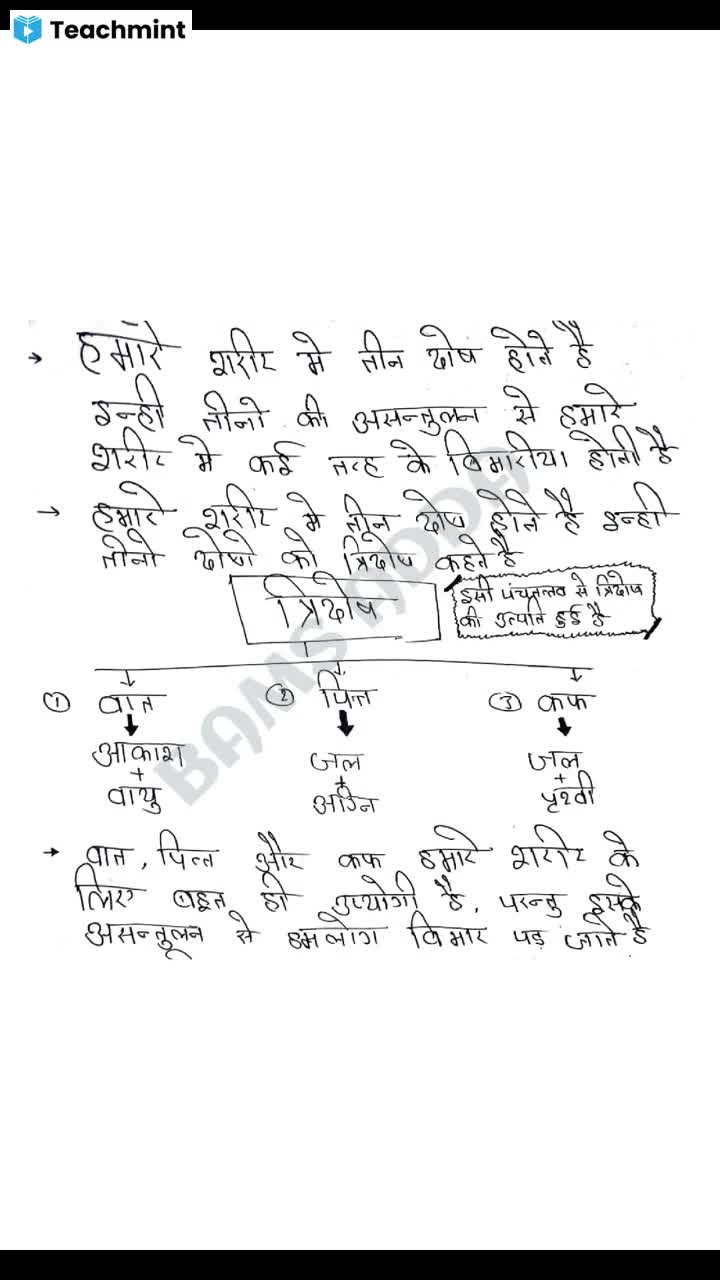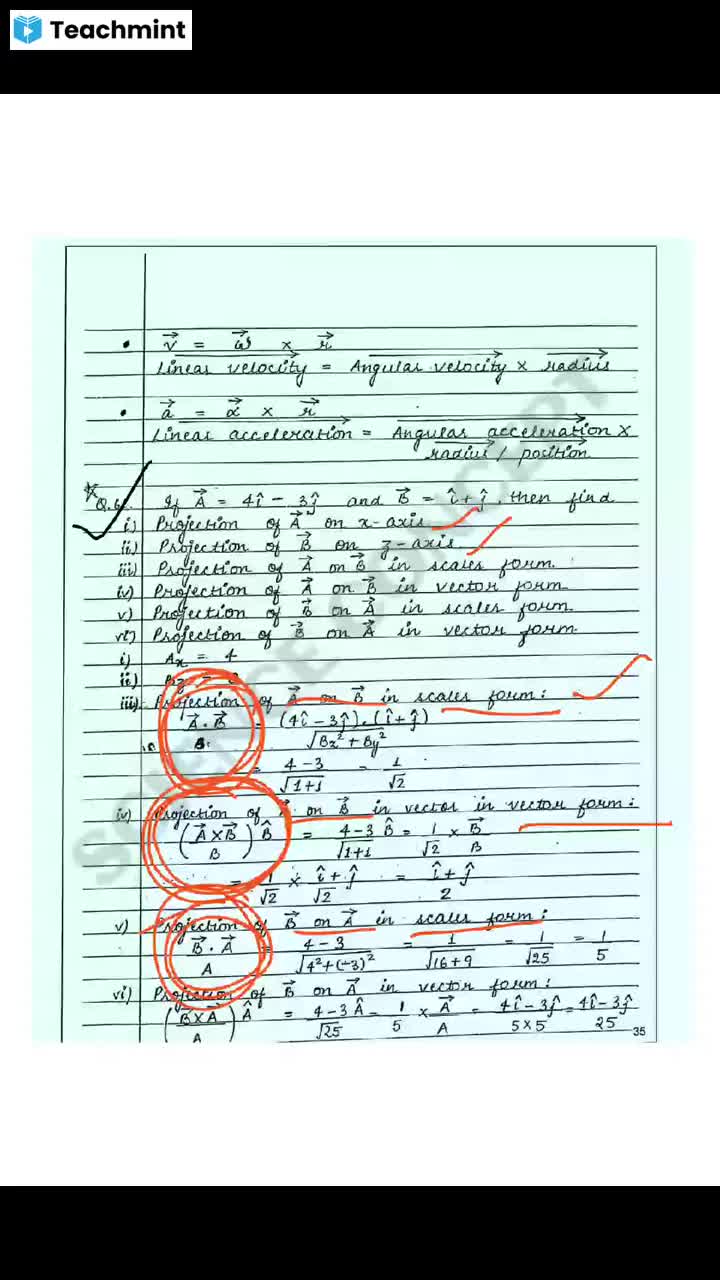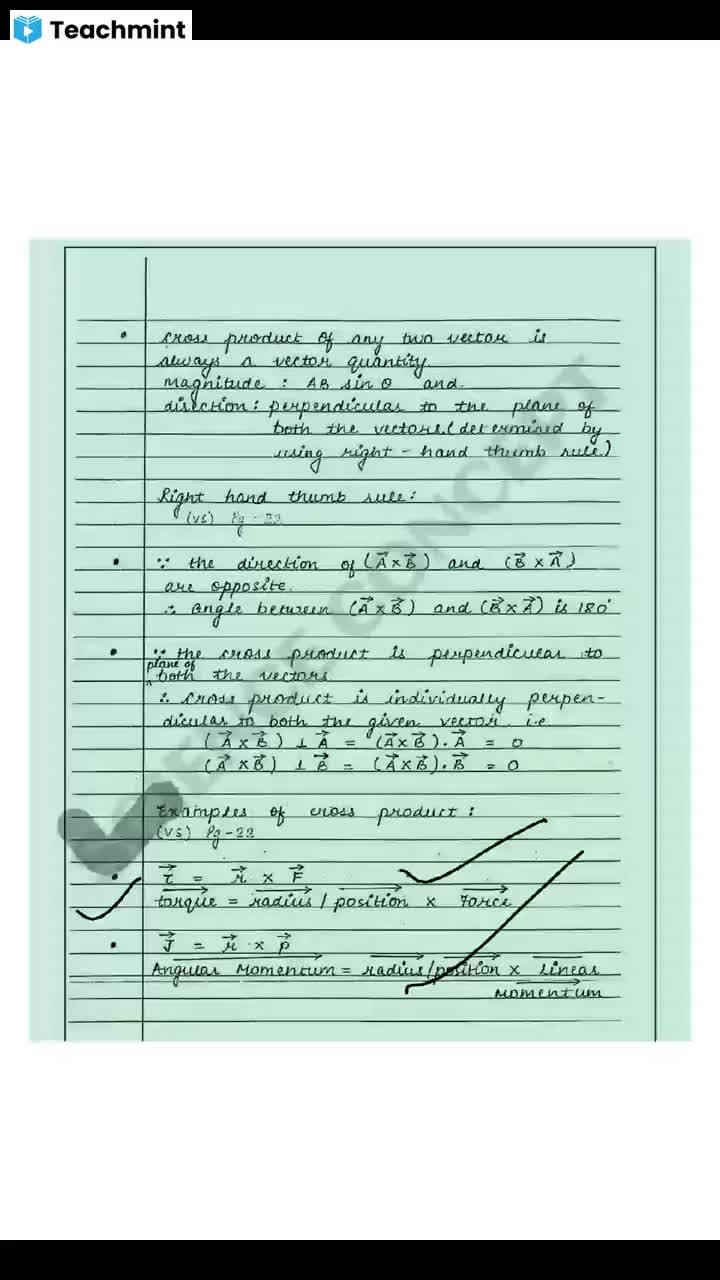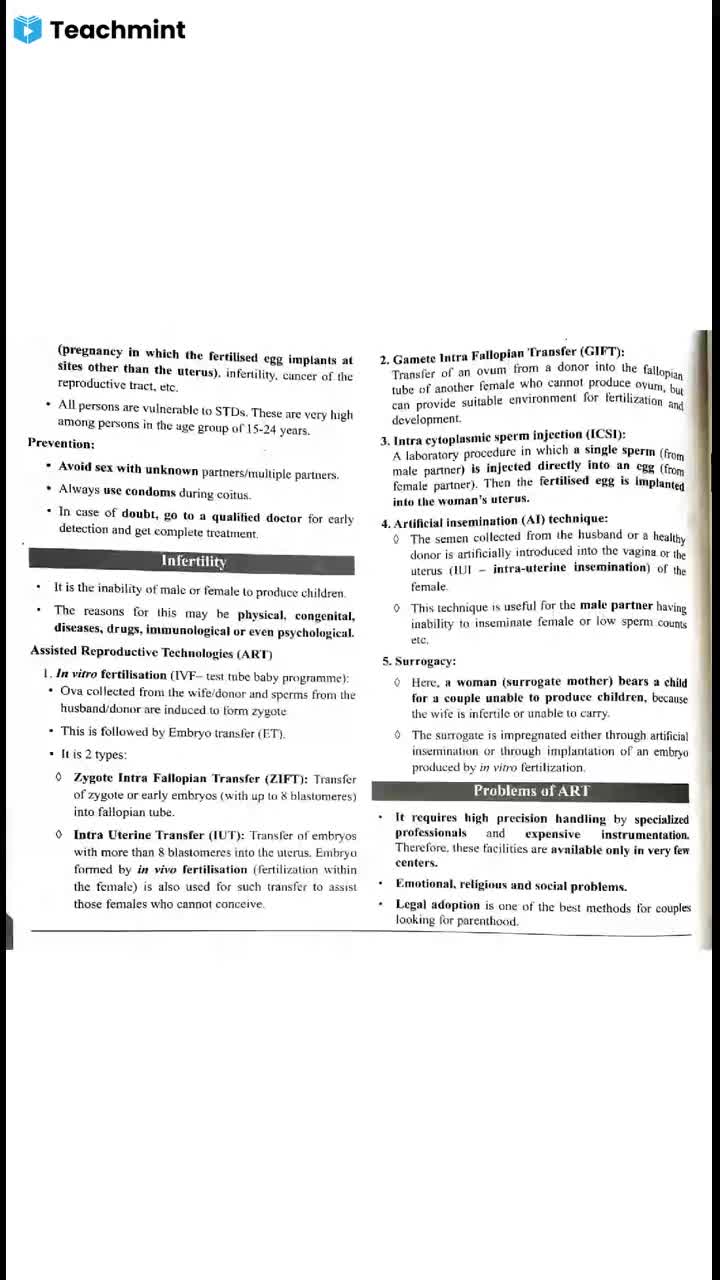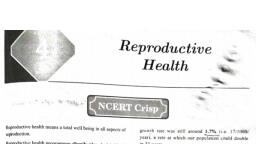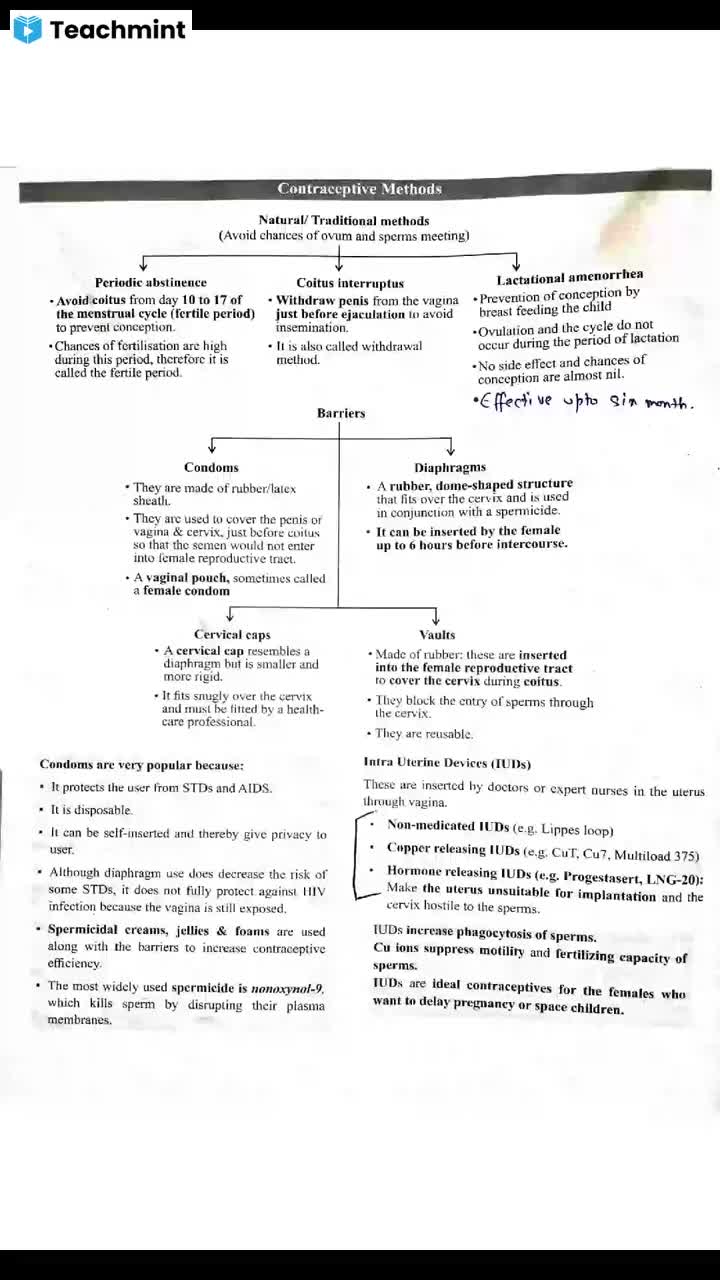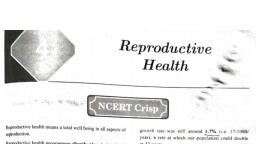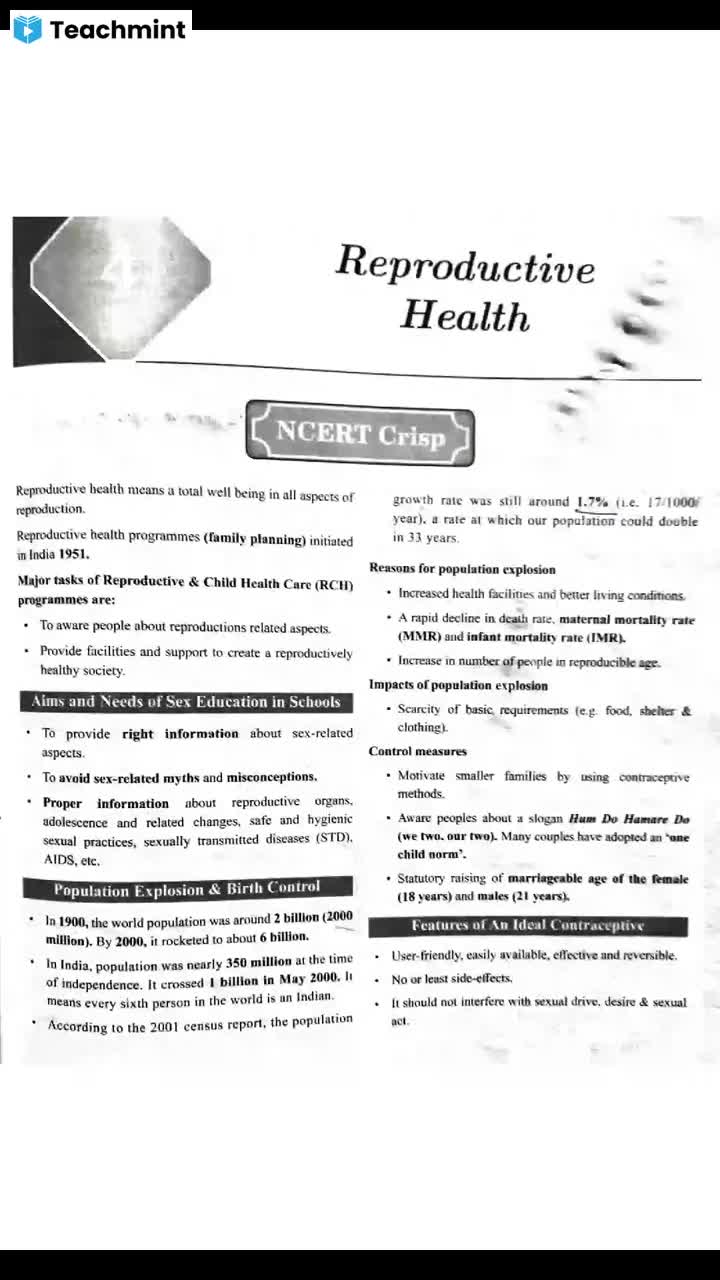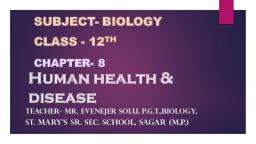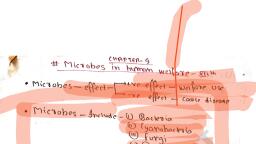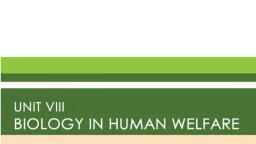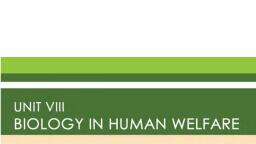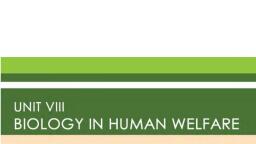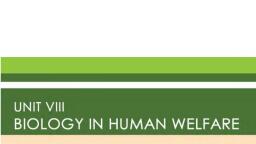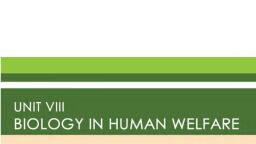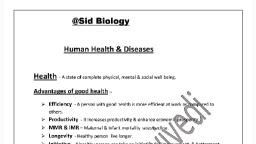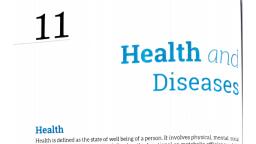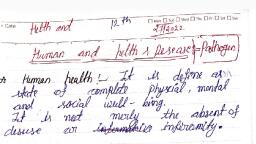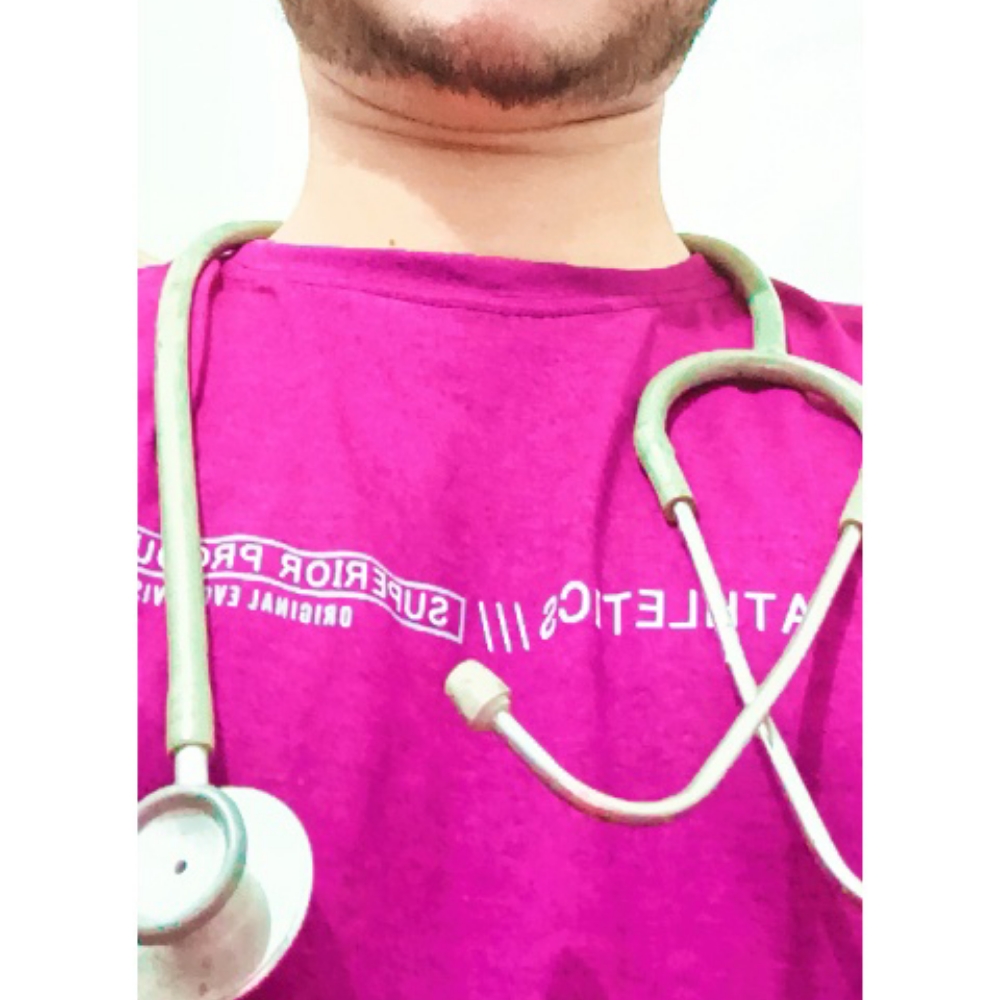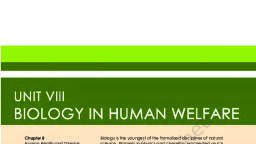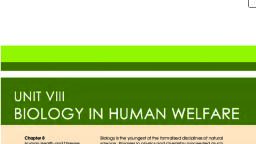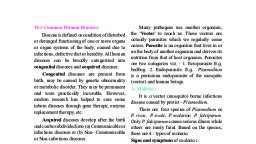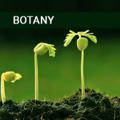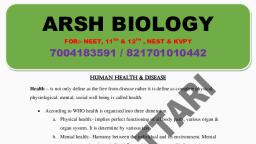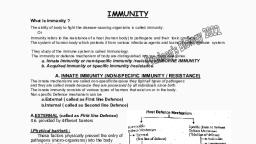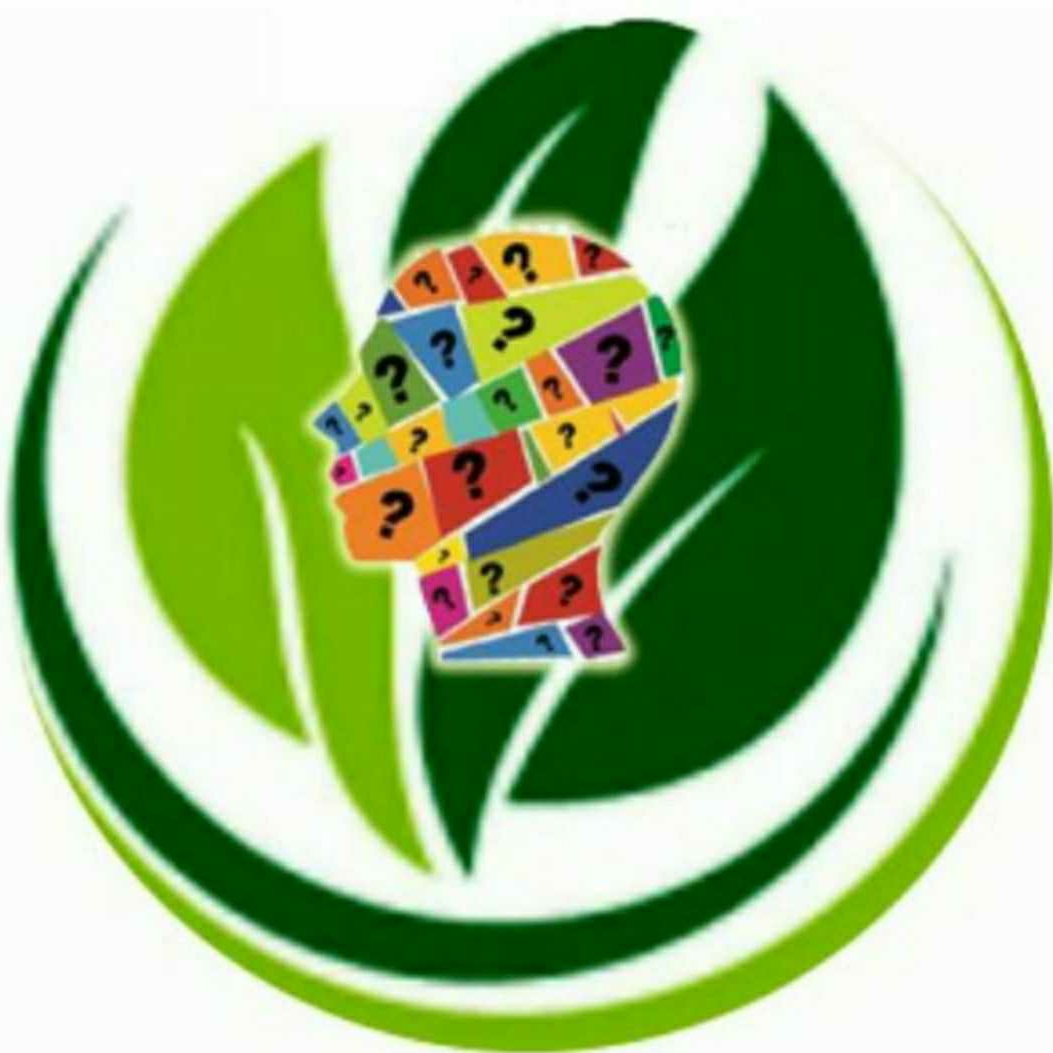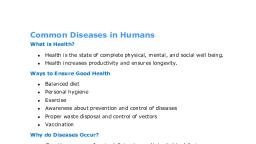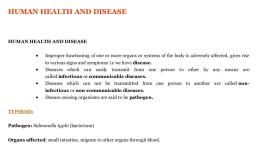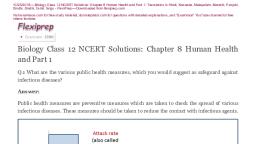Page 1 :
UNIT VIII, BIOLOGY IN HUMAN WELFARE, , , , Chapter 8 Blolegy |s the youngest of the formetised alsciplines of natural, Human Health ond Disease science. Progress in physics ana chemistry proceeded much, , faster than in Biology. Applications of physics and chemistry in, Chapter? our dally life also have a higher visibility than those of biology., Strategies for Enhancement in However, twentieth century and certainly twenty-first century, Food Production hes demonstrated the utility of biological knowledge In, , furthering human welfare, be it in health sacter or agriculture., Chapter 10 The discovery of antibiotics, and synthetic plant-derived drugs,, Microbes in Kumen Welfare angesthetics have changed mecicel practice on one hand, , and human health on the other hand. Life expectancy of, human beings have dramatically changed over the years., Agricultural practices, food processing ond diagnostics have, brought socio-cultural changes in human communities. These, are briefly described in the following three chapters of this unit.
Page 2 :
Bom In August 1925 in Kumbakonarn in Tamil Nadu, Monkamlou Sambosivan, Swaminathan did his graduation and post-graduation in Botany from, Madras University. He worked in different capacities in large number of, Institutions In India ond abroad onc developed his expertise In genetics, ond plant breeding., , The School of Cytogenetics and Radiation Research established at the, Inclan Agriculture’ Research Institute (ARID enabled Swaminathan and his, tear to develop short-duration high-yielding varieties of ice including scented, Basmoti He is also known for the development of the concept of crop, cafeteria, crop scheduling and genetically mproving the yield and quality, , Swaminathan initiated collaboration with Norman Borlaug, which, culminated in the ‘Green Revolution’ through introduction of Mexican, M.S. SWaMINeTHAN ——Vegioties of wheat in India. This wes highly recognised and oppreciated. He, , oe 6 also the initiator of ‘Lab-ta-Land’, food security and several other, environmental programmes. He has been honoured with Padma Bhushan, ond several other prestigious awards, medals and fellowships by institutions, of excellence, , , , , , 2021-22
Page 3 :
CHAPTER 8, , h2og3cHos, , , , HUMAN HEALTH AND ASE, , , , , , , 8.1 Common Diseases in, Humans, , Health, for a long time, was considered as a state of body, , 8.2 Immunity, and mind where thicre was a balance ol cerLain “humors:, , 83 AIDS, 84 Cancer, 8.5 Drugs and Alcohol Abuse, , , , stated that mind influences, through neural vate and, endocrine system, our immune system and that our, , main thaskl d and, can affect our health. Of th is, @i — deficiencies dis, micies /delecits i., m birth;, (ii) infections and, ie eercse wee our bodies, habits that we, etc., , 2021-22
Page 4 :
BIOLOGY, , The term health is very frequently used by everybody. How do we, define it? Health does not simply mean ‘absence of disease’ or ‘physical, filmess’. Tl could be defined as a state of complete physical, mental and, social well-being. When people are healthy, they are more ellicient at, work. This increases productivity and brings economic prosperity. Health, also increases longevily of people and Loew infant and maternal, , , , , , mortality., Balanced di, , , , , can be broast¥ grouped into infectious and non-infectious. Discascs, which are easily transmitted from one person to another, are called, infectious diseases. Infectious discases are very common and every, one of us suffers from these at sometime or other, Some of the infectious, , diseascs like AIDS < rm Among non-inicctious ie le is the, cause of death : dversely., , , , , , causing Gramintenis are called thogens. Most pa, pathogens as they cause harm to the host by living in (or onl them. The, pathogens can enter our body by various means, multiply and interfere, with normal vital activities, resulting in morphological and functional, damage. Pathogens have to adapt to life within the environment of the, host. For example, the pathogens that enter the gut must know a way of, surviving in the stomach at low pH and resisting the varia, enzymes. A few representative members from different g¢, pathogenic organisms are discussed here alongwith the discas, by them. Preventive and control measures againstthese diseas€s, are also briefly described., , Salmonella typhi is a pathogenic bacte: 2, fever in human beings. These pathogens gene tresmall intestine, through food and water contaminated with them and migrate to other, , , , , , , , , , , organs through blood. Sustained hivh—feser(39° fo 40°C), ares ess pg, , stomach pain, constipation, headache and loss of appetite are some of, the common symptoms of this disease. Intestinal perforation and death, may occur in severe cases. Typhoid fever could be confirmed by, , 2021-22
Page 5 :
HUMAN HEALTH AND DISEASE, , Widal test : A classic case in medicine, that of Mary Mallon nicknamed, Typhoid Mary, is worth mentioning here. She was a cook by profession, and was a typhoid carrier who continued to spread typhoid for several, years through the food she prepared., , Bacteria like Streptococcus pneumoniae and Haemophilus influenzae, are responsible for the disease pneumonia in humans which infects the, alveoli (air filled sacs) of the lungs. As a result of the infection, the alveoli, get filled with fluid leading to severe problems in respiration. The symptoms, of pneumonia include lever, chills, cough and headache. In severe cases,, the lips and finger nails may turn gray to bluish in colour. A healthy, person acquires the infection by inhaling the droplets/acrosols released, by an infected person or even by sharing glasses and utensils with an, infected person. Dysentery, plague, diphtheria, etc., are some of the other, bacterial diseases in man., , Many viruses also cause diseases in human beings. Rhino viruses, represent one such group of viruses which cause one of the most infectious, human ailments —- the common cold. They infect the nose and respiratory, passage bul. not the lungs, The common cold is characterised by nasal, congestion and discharge, sore throat, hoarseness, cough, headache,, tiredness, elc., which usually last. for 3-7 days. Droplets resulling from, cough or sneezes of an infected person are cither inhaled directly or, transmitted through contaminated objects such as pens, books, cups,, doorknobs, computer keyboard or mouse, eLe., and cause imeclion ina, healthy person., , Some of the human diseases are caused by protozoans loo. You might., have heard about malaria, a disease man has been fighting since many, years. Plasrnodiurn, a tiny protozoan is responsible lor this disease. Dillerent., species of Plasmodium (P. vivax, P_ malaria and P. falciparum) are, responsible for dillerent types of maalz these, malignani.malaria caused, by Plasmoclium faleiparumi ous one and can even be fatal., , Let us take a gla eycle of Plasmodium (Figure 8.1)., Plasmodium ente body as sporozoites [inleclious form), through the bi d female Anopheles mosquito. ‘The parasites, the liver cells and then attack the red blood cells, their rupture. The rupture of RBCs is associated with, xic subslarice, haemozoin, which is responsible for the chill, fever recurring every three to four days. When a female Anopheles, osquito bites an infected person, these parasites enter the mosquito’s, body and undergo further development. The parasites multiply within, them to form sporozoites that are stored in their salivary glands. When, these mosquitoes bite a human, the sporozoites are introduced into his/, her body, thereby initiating the events mentioned above. It is interesting, to note that the malarial parasite requires two hosts — human and, mosquitoes — to complete ils life cycle (Figure 8.1); the female Anopheles, mosquito is the vector (transmitting agent) too., , , , , , , , , , , , , , , , , 2021-22, , cy)

